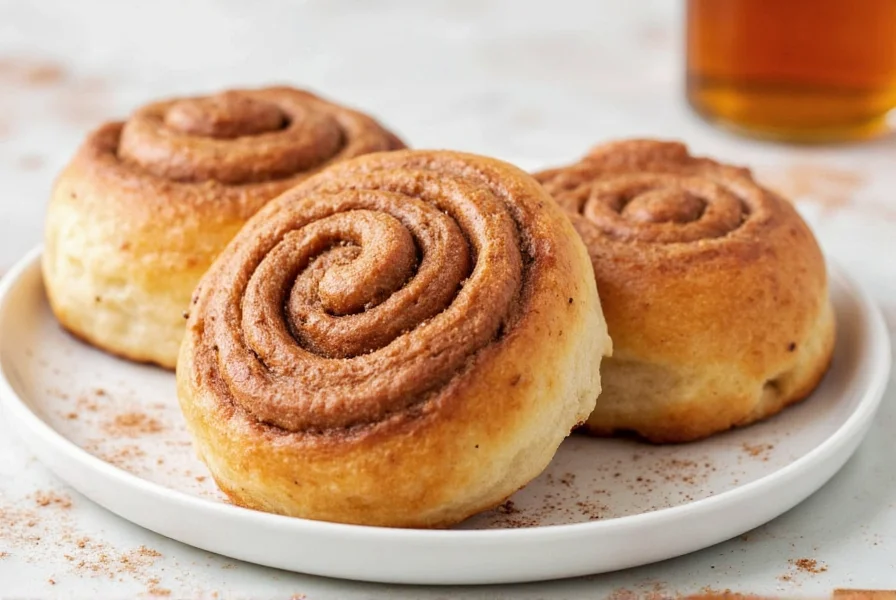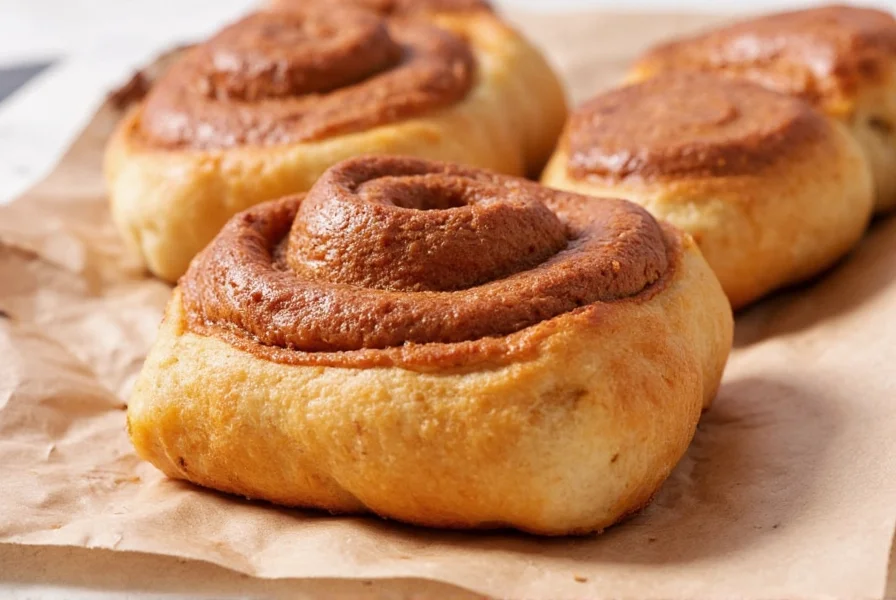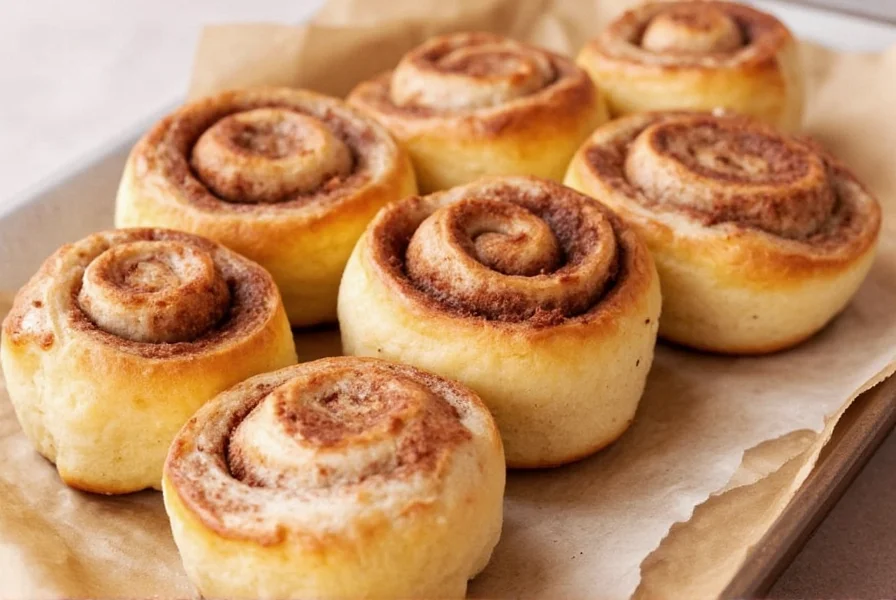When crafting the perfect cinnamon roll, understanding the role of cinnamon goes far beyond simply sprinkling spice on dough. This humble spice transforms ordinary pastry into an aromatic delight, but achieving that signature flavor requires precision and knowledge of cinnamon's properties.
The Science Behind Cinnamon in Baking
Cinnamon isn't just a single spice but comes from different tree varieties, each with unique chemical compositions affecting flavor intensity. Ceylon cinnamon (Cinnamomum verum) offers delicate, citrusy notes, while Cassia cinnamon (Cinnamomum cassia) delivers the bold, familiar warmth most associate with cinnamon rolls. Professional bakers consistently prefer Cassia for its robust flavor that withstands baking temperatures without dissipating.

Optimal Cinnamon-to-Sugar Ratios Explained
Through extensive recipe testing, food scientists have determined that the sweet spot for cinnamon roll filling lies between 1.5-2 tablespoons of ground cinnamon per cup of sugar. This cinnamon roll spice ratio creates sufficient flavor without creating a gritty texture or causing the filling to separate from the dough during proofing.
| Cinnamon Amount | Sugar Amount | Resulting Flavor Profile |
|---|---|---|
| 1 tbsp | 1 cup | Mild, subtle cinnamon flavor (good for children) |
| 1.5 tbsp | 1 cup | Balanced traditional flavor (most popular) |
| 2 tbsp | 1 cup | Intense, bakery-style cinnamon experience |
| 2.5+ tbsp | 1 cup | Overpowering, potentially bitter results |
Cinnamon Quality and Freshness Matters
Many home bakers overlook how quickly ground cinnamon loses potency. For the best cinnamon for cinnamon rolls, use freshly ground sticks rather than pre-ground powder. Properly stored in an airtight container away from light, whole cinnamon sticks maintain their volatile oils for up to 3 years, while ground cinnamon begins losing flavor within 6 months.
When evaluating cinnamon quality, perform the sniff test: high-quality cinnamon should immediately fill your nose with warm, sweet aroma. If you must strain to detect scent, the spice has degraded and won't deliver that signature cinnamon roll flavor profile you're seeking.
Advanced Cinnamon Techniques for Perfect Rolls
Professional pastry chefs employ several techniques to maximize cinnamon impact:
- Butter-cinnamon paste: Mix softened butter with cinnamon before adding sugar to create an emulsion that prevents separation
- Layered application: Apply half the cinnamon mixture before sugar, then finish with remaining cinnamon for even distribution
- Temperature control: Chill filling ingredients before spreading to maintain clean swirl definition
For those wondering how much cinnamon in cinnamon rolls is too much, remember that cinnamon contains coumarin, which can become bitter in high concentrations. The European Food Safety Authority recommends staying below 0.1mg of coumarin per kilogram of body weight daily - roughly equivalent to 1-2 teaspoons of Cassia cinnamon for most adults.
Troubleshooting Common Cinnamon Roll Issues
When cinnamon rolls emerge with uneven flavor or structural problems, the issue often relates to cinnamon handling:
- Sinking filling: Caused by excessive moisture in the cinnamon-sugar mixture. Solution: Add 1 teaspoon cornstarch per cup of sugar
- Muted flavor: Often from old or low-quality cinnamon. Solution: Use freshly ground sticks and increase ratio by 25%
- Bitter aftertaste: Indicates too much cinnamon or degraded spice. Solution: Reduce cinnamon by 25% and verify freshness
Understanding these nuances transforms your homemade cinnamon roll recipe from ordinary to extraordinary. The perfect balance creates that nostalgic aroma that fills your kitchen and the complex flavor profile that keeps people reaching for seconds.

Conclusion: Mastering the Cinnamon Element
Creating exceptional cinnamon rolls hinges on respecting cinnamon's role as the star ingredient. By selecting quality spice, maintaining proper ratios, and applying professional techniques, you'll achieve consistent results that rival bakery favorites. Remember that the ideal cinnamon ratio for cinnamon rolls serves as your foundation, but don't be afraid to adjust based on personal preference and the specific characteristics of your chosen cinnamon variety.
What's the best type of cinnamon for traditional cinnamon rolls?
Cassia cinnamon (often labeled as "regular" cinnamon in supermarkets) provides the bold, familiar flavor most associate with bakery-style cinnamon rolls. Its higher cinnamaldehyde content delivers that intense warmth that holds up during baking, unlike the more delicate Ceylon variety which works better in subtle applications.
How can I prevent my cinnamon filling from sinking to the bottom?
To prevent sinking, mix 1 teaspoon of cornstarch with your sugar before adding cinnamon. The cornstarch absorbs excess moisture from the butter. Additionally, ensure your filling ingredients are cold when applied to the rolled dough, and avoid overfilling - the ideal thickness is about 1/8 inch across the dough surface.
Can I substitute apple pie spice for cinnamon in cinnamon rolls?
While apple pie spice contains cinnamon, it also includes nutmeg, allspice, and cloves which alter the traditional flavor profile. For authentic cinnamon rolls, use pure cinnamon. If you want additional warmth, add just 1/4 teaspoon of nutmeg to your cinnamon-sugar mixture rather than substituting with apple pie spice.
Why do my cinnamon rolls taste bitter even with the right ratio?
Bitterness typically indicates degraded cinnamon. Ground cinnamon loses potency within 6 months, and as it ages, the flavor compounds break down into bitter elements. Test your cinnamon's freshness by rubbing a small amount between your fingers - fresh cinnamon should immediately release strong aroma. If not, replace it with newly ground sticks for optimal flavor.











 浙公网安备
33010002000092号
浙公网安备
33010002000092号 浙B2-20120091-4
浙B2-20120091-4